
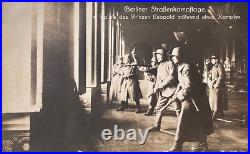
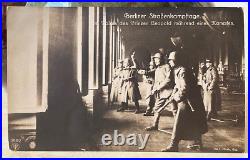
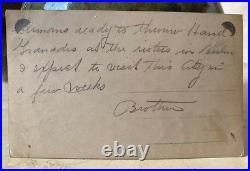

POST-WW1 GERMAN FREIKORPS BERLIN PRINCE LEOPOLD’S PALACE PHOTO POSTCARD RPPC c1919. PERIOD HAND ID’d ON THE REVERSE. Germans ready to throw Hand. Grenades as the rioters in Berlin. I expect to visit this City. In a few weeks. PERIOD CAPTIONED IN THE LOWER NEGATIVE. M palais des Prinzen Leopold während eines Kampfes. Berlin Street Fight Days. Prince Leopold’s palace during a fight. SHARP FOCUS WITH VERY GOOD CONTRAST. THIS IS NOT A REPRODUCTION OR A COPY.



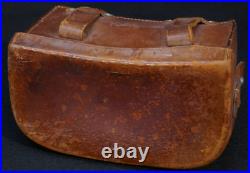
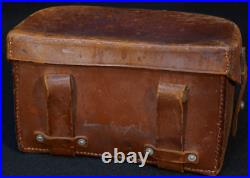
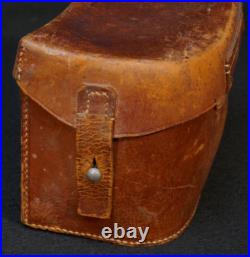
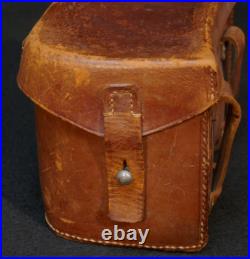

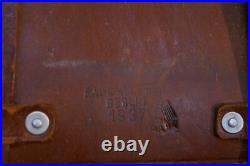
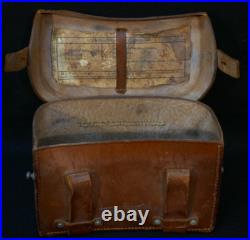
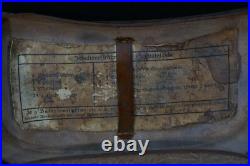
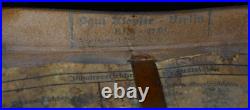



WWII German Wehrmacht Medic Leather Field Pouch Case’Paul Klopfer Berlin 1937. Original WW2 German Wehrmacht Medic Leather Field Pouch Case’Paul Klopfer Berlin 1937′, Good Issued. As Photographed with issue wear and staining as seen (serviceable closures). A Fine Candidate for any Collection, Impression, or Display. Recent Estate Collection Acquisition & Presented as Acquired, Scarce (single pouch) – Complies with All Listing Regulations. Check back often – we search estates and sources across the world to bring a fine selection of militaria. Please review all photos for details regarding the condition of the item listed – further condition information will be included in the listing as is relevant, if you need additional photographs or have questions regarding the condition please do not hesitate to ask. I describe all items to the best of my ability – please do not hesitate to ask any and all questions prior to the close of the listing. Mistakes very rarely occur – however if one does please rest assured that it will be corrected. International Buyers are Welcome!


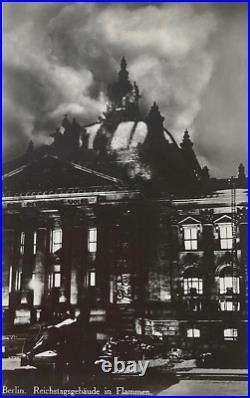
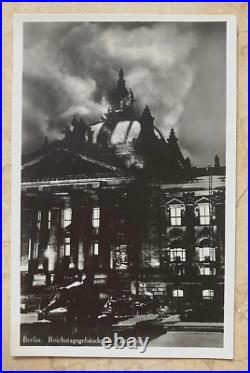
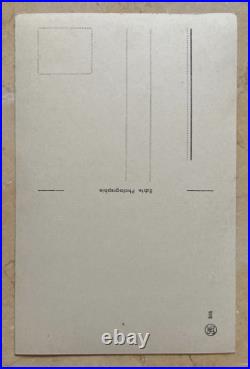
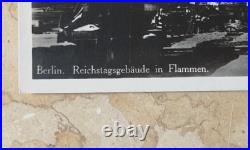

WW2 GERMAN WW2 GERMAN BERLIN REICHSTAG FIRE PHOTO POSTCARD RPPC. Was a false flag. Arson attack on the Reichstag building, home of the. German parliament in Berlin, on Monday, 27. February 1933, precisely 4 weeks after the WW2. German Leader was sworn in as Chancellor of Germany. Marinus van der Lubbe, a Dutch council communist. Was the culprit; the National Socialists attributed the fire to a. Group of Communist agitators, used it as a pretext to. Claim that Communists were plotting against the. German government, and induced President Paul. Von Hindenburg to issue the Reichstag Fire Decree. Suspending civil liberties, and pursue a ruthless. Confrontation with the Communists. The fire pivotal in the establishment of the National Socialist. CAPTIONED IN THE LOWER LEFT NEGATIVE. Reichstag building, in flames. PHOTO POST CARD MAKERS IMPRINT ON REVERSE. THIS IS NOT A REPRODUCTION OR A COPY.


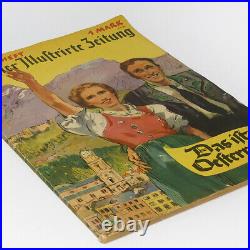

A special issue of the Berliner Illustrierte Zeitung from 1938, published shortly after the annexation of Austria. It gives a wonderful overview of the beauty of the country, its culture, people and history. Profusely illustrated, the book deals in detail with the country of Austria, the 4 days of the Anschluss, the prehistory, what you need to know about the country, the Steffl, about the Viennese, 100 words of Viennese, a short guide to Vienna, the Turks outside Vienna, songs of Austria, Styria in Hollywood, art, inventors and inventions from Austria, Berliners travelling to Tyrol, the road to the Reich, the new borders, the economy on the move, Viennese humour, and so much more. A truly fantastic book. Dozens of photos, drawings and illustrations. Many ads in the rear. In good exterior and very good interior condition Mild traces of use and age to wrappers and spine, otherwise ok. All pages are complete and tight in the binding. Approx/Measurements: 14-1/4″ x 10-1/4″ 1.0 lbs. Published by German Publishing House, Berlin.


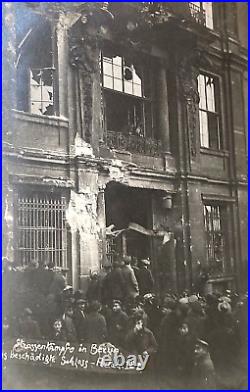
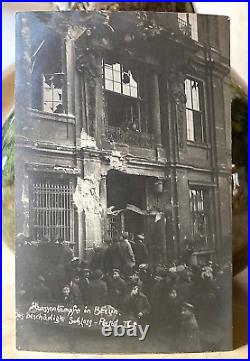
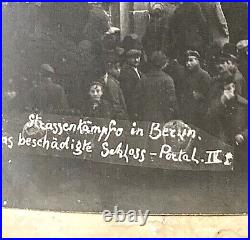
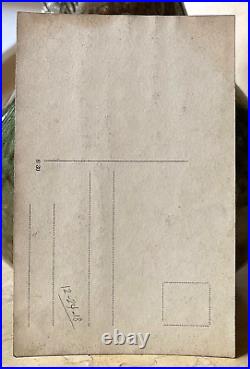
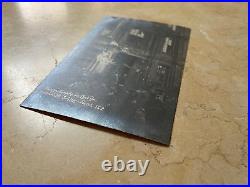

POST-WW1 GERMAN FREIKORPS CHRISTMAS CRISIS AT BERLIN PALACE PHOTO POSTCARD RPPC. POST-WW1 GERMAN FREIKORPS CHRISTMAS CRISIS AT BERLIN PALACE. POST-WW1 GERMAN FREIKORPS CHRISTMAS CRISIS AT BERLIN PALACE AT THE. RARE HAND CHRISTMAS EVE DATED PHOTO POSTCARD IMAGE OF IMPERIAL GERMAN SOLDIERS AND BERLINERS GATHERING AT THE CASTLE GATE #4 IN WHICH GREAT DAMAGE INFLICTED. PHOTO DOCUMENTED AS IT HAPPENED ON DECEMBER 24,1918. The 1918 Christmas crisis German: Weihnachtskämpfe or. Christmas battles’ or’Christmas rebellion’ was a brief battle between the socialist revolutionary Volksmarinedivision and regular German army units on 24 December 1918 during the German Revolution of 1918-19. It took place at the Berlin Palace, the main residence of the House of Hohenzollern. Around 67 people were killed, and the event marked the point at which the hitherto largely bloodless revolution turned more violent. The fighting was the immediate cause for the more radical members to leave the revolutionary government and led to resentment among the workers against the Social Democratic government of Friedrich Ebert. This set the scene for the much larger-scale violence of January 1919 known as the Spartacist uprising. Since the revolutionary sailors defeated the regular army force sent against them, the engagement was also an important episode in the rise of the right-wing Freikorps on which the government increasingly relied. PERIOD HAND OPAQUED CAPTION IN THE LOWER LEFT OF THE NEGATIVE. Das beschädigte Schloss – Portal. Street fighting in Berlin. The Damaged Castle – Portal. PERIOD HAND DATED ON THE REVERSE. VERY SHARP FOCUS WITH VERY GOOD CONTRAST. THIS IS NOT A REPRODUCTION OR A COPY.


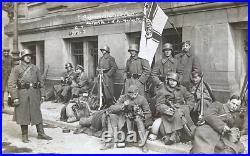
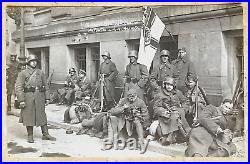
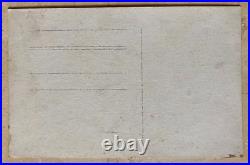
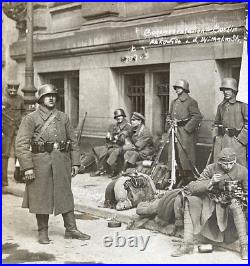
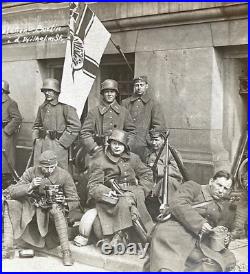
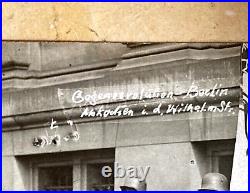
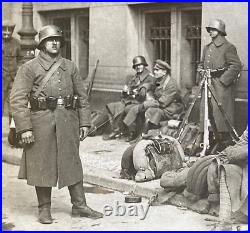
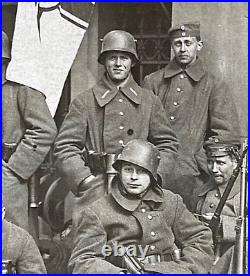

POST-WW1 GERMAN KAPP PUTSCH FREIKORPS in BERLIN 1920 PHOTO POSTCARD RPPC. POST-WW1 GERMAN KAPP PUTSCH FREIKORPS in BERLIN 1920. FULLY ARMED POST-WW1 GERMAN KAPP PUTSCH FREIKORPS MEMBERS OF THE MARINE BRIGADE EHRHARDT ARE SEEN WITH THE IMPERIAL NAVY FLAG ON THE STREETS OF BERLIN DURING THE KAPP-PUTSCH in BERLIN MARCH 1920. Was an attempted coup against the German national government in Berlin on 13 March 1920 that lasted 5 days. Also known as the. Was a Freikorps unit of the early Weimar Republic. It was formed on 17 February 1919 as the Second Marine Brigade from sailors (Matrosen) of the former Imperial German Navy under the leadership of Hermann Ehrhardt. The Brigade was used primarily in the suppression of the Bavarian Soviet Republic and the First Silesian Uprising, both in the first half of 1919. In March 1920, faced with its imminent disbanding by orders of the government in Berlin, the Marine Brigade was one of the main supporters of the Kapp Putsch that tried to overthrow the Weimar Republic. TITLED IN THE LOWER NEGATIVE. VERY SHARP FOCUS WITH VERY GOOD CONTRAST. THIS IS NOT A REPRODUCTION OR A COPY.


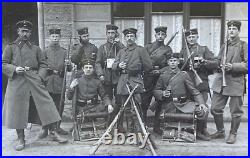
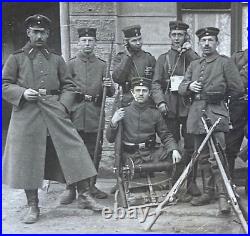
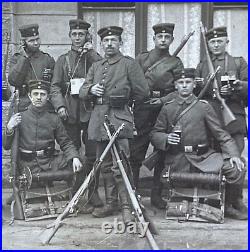
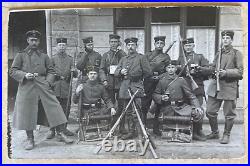
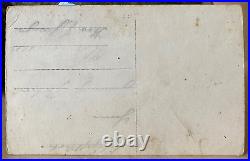
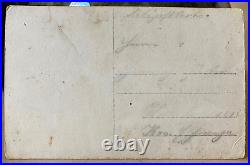

POST-WW1 GERMAN KAPP PUTSCH FREIKORPS TELEPHONES BERLIN 1920 PHOTO POSTCARD RPPC. POST-WW1 GERMAN KAPP PUTSCH FREIKORPS w/ TELEPHONES BERLIN 1920 PHOTO POSTCARD RPPC. ARMED POST-WW1 GERMAN KAPP PUTSCH FREIKORPS MEMBERS OF THE MARINE BRIGADE EHRHARDT ARE SEEN WITH TELEPHONE CABLE LAYER BACKPACKS, TELEPHONE HANDSETS AND A CABLE WIRE POLE HAND TOOL ON THE STREETS OF BERLIN DURING THE KAPP-PUTSCH in BERLIN MARCH 1919. PARTIAL TRANSLATED PERIOD HAND ID’D ON THE REVERSE IN OLD GERMAN SCRIPT. – – isangn. Was an attempted coup against the German national government in Berlin on 13 March 1920 that lasted 5 days. Also known as the. Was a Freikorps unit of the early Weimar Republic. It was formed on 17 February 1919 as the Second Marine Brigade from sailors (Matrosen) of the former Imperial German Navy under the leadership of Hermann Ehrhardt. The Brigade was used primarily in the suppression of the Bavarian Soviet Republic and the First Silesian Uprising, both in the first half of 1919. In March 1920, faced with its imminent disbanding by orders of the government in Berlin, the Marine Brigade was one of the main supporters of the Kapp Putsch that tried to overthrow the Weimar Republic. VERY SHARP FOCUS WITH VERY GOOD CONTRAST. THIS IS NOT A REPRODUCTION OR A COPY.


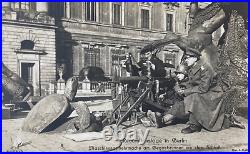
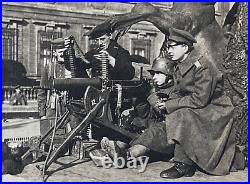
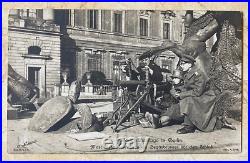
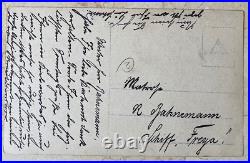


MACHINE GUN NOISE AT THE BEGAS FOUNTAIN IN FRONT OF THE CASTLE. TITLED IN THE LOWER NEGATIVE.


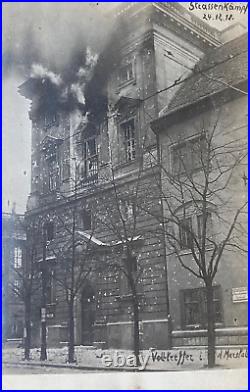
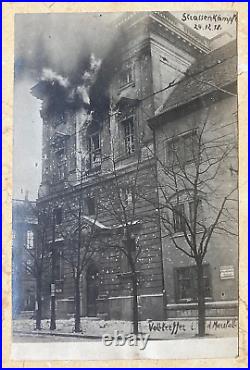
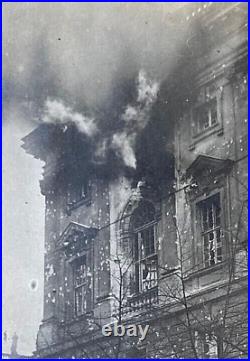
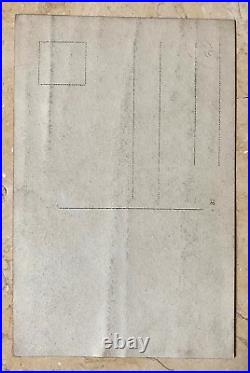
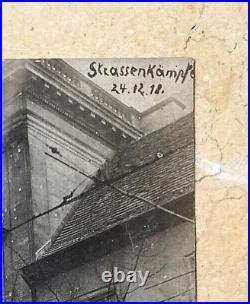
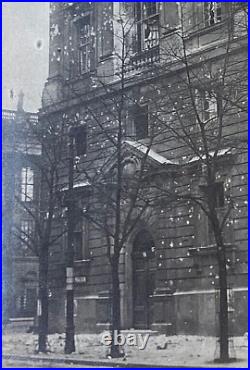
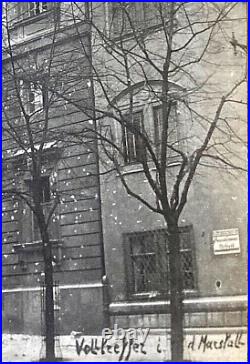

Volltreffer i d Marstall. (Direct hit in the stables). PERIOD HAND OPAQUED CAPTION IN THE UPPER AND LOWER RIGHT OF THE NEGATIVE THIS IS NOT A REPRODUCTION OR A COPY.





























































